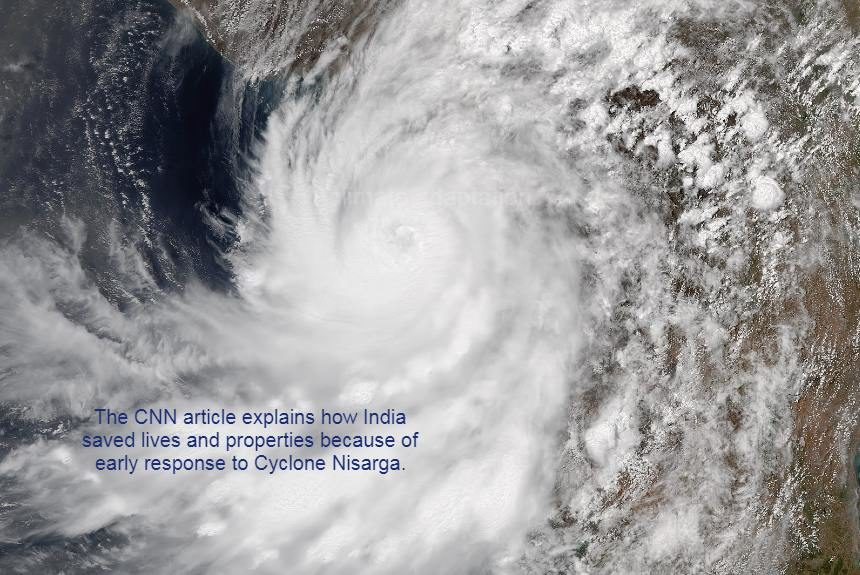A study published in May 2020 by the University of Wisconsin in Madison and the National Oceanic and Atmospheric Administration (NOAA) that hurricanes and cyclones are increasing in intensity decade after decade. This finding comes from nearly 40 years of satellite data on global storms (Jone & Miller, 2020).
The cause for the increasing intensity is global warming. Global warming has raised ocean temperatures, especially in regions where tropical cyclones form. The combination of warm temperatures and atmospheric conditions results in storms reaching higher intensities (Jones, Miller, 2020).
The CNN article explains how India saved lives and properties because of the early response to Cyclone Nisarga. Although these kinds of tropical cyclones in Mumbai or this area of India are rare, the article says that action from the disaster response team has effectively spared lives (Regan and Gupta, 2020).
Regan and Gupta (2020) explain further that:
- Maharashtra’s disaster response team evacuated more than 100,000 people, including coronavirus patients, and moved them to temporary shelters. The team urged people in low-lying areas to seek shelter while educating those who refused to move.
- The early warning and disaster response have proven effective in protecting millions of lives in Mumbai, with only one reported death from the storm. In the past, supercyclones that landed on India’s eastern side have claimed many lives. For example, in Odisha, 89 lives were lost from a category four hurricane in May 2019, and almost 10 thousand died in a super cyclone in 1999.
- Although early warning systems during a disaster can prevent deaths, infrastructure and agriculture damages from cyclones and storms remain devastating and costly. Aparna Roy of India’s Centre for New Economic Diplomacy (CNED) says that India needs to improve its infrastructure resilience to withstand climate impacts. The government must also ensure that infrastructures can bounce back after disasters and remain operational during crises.
Sources:
Jones, J. & Miller, B. (2020, May 18). Hurricanes, typhoons and cyclones are becoming stronger, according to a new NOAA study. CNN. Retrieved from https://edition.cnn.com/2020/05/18/weather/climate-change-hurricane-tropical-cyclone/index.html
Regan, H. & Gupta, S. (2020, June 4). India’s cyclone response saves lives. Climate-resilient infrastructure will save livelihoods. CNN. Retrieved from https://edition.cnn.com/2020/06/04/asia/cyclone-nisarga-mumbai-india-damage-intl-hnk/index.html
BACKGROUND PHOTO CREDIT: By NOAA/NASA – By NOAA/NASA – https://www.avl.class.noaa.gov/saa/products/welcome, Public Domain, Link. We cropped the image to fit the website’s needs.



Leave a Reply